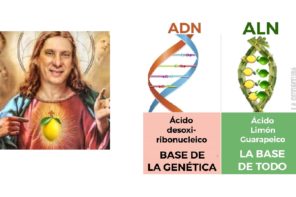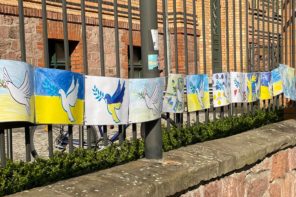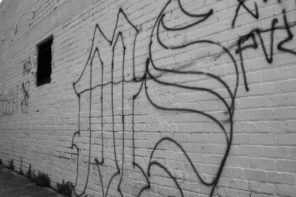Introduction
Ariane is an anthropologist and a performer who chose to combine these two disciplines in her professional and personal life. She is now based in Montreal, Canada, but I met her during her doctoral degree in Paris, France.
In our conversations about the Fluid Mosaic that works with biological notions, she was most struck by cell membranes. She was inspired to interpret the membrane as if it was her body; a master node that joins her up with “others”. From this interpretation, she deliberately seeks to challenge the idea of the membrane (or body) as an absolute barrier that separates entities. Although the membrane does act as a sort of barrier, it is porous and malleable, allowing for the passing of different elements from outside the cells that are required for their existence. Therefore, these passing “foreign” elements are a substantial part of the cells themselves.
In her work, Ariane Benoit named these external elements étranger-s. In French, the Benoit’s mother tongue, the word étranger “foreigner” evokes the work étrange “stranger” linking an ambiguity between ‘someone who is coming from another country’ and ‘someone who is weird and unfamiliar’. This also exists in English, as we would find out when subtitling the song in the video. For psychoanalyst Julia Kristeva (2014), who reflected on the notion of étranger-étrange, “stranger” does not exist in itself, but rather animates the repressed traumas of the subject upon meeting with an “other” that becomes strange. The category of “other” is here employed as an antithesis of the dialectic structure “self–other”: “other is a subject excluded from a dominant in-group which constructs an out-group” (Staszak 2008). From a phenomenological perspective, microbes are étranger-s that co-depend on Benoit’s body, entangling their existence with hers. In other words, one cannot be understood without the other.
In Ariane Benoit work, she pursues an analysis of the strange that is similar to Kristeva’s. For both of them, the étranger does live inside each person: “It is the hidden part of our identity” (Kristeva 2014). They both address the notion of fear, but from different angles. For Kristeva the subject’s fear is internal, due to their inability to recognize the strangeness/foreignness within itself; for Benoit, the fear comes from outside, from the mistrust based on the unfamiliarity of the foreigner, which also exists inside her body.
As a way of overcoming this fear, Kristeva talks about a self-awareness process to accept the inner and the outer part of the self-other (Visker 2005). Benoit in a different way proposes an intersubjective process through the practice of love that embraces the outer-other within the self-other. Despite this difference, both of them affirm that the relation with the “other” is in the self-other; or as Kristeva states: “the foreign is with me, since we are all foreign” (1991: 192).
In the following piece, Ariane Benoit has based her work on her experience of spirituality. She has explained her process as a limitless frame similar to the psychological term Oceanic feeling (Freud1930). This feeling is the source of all religious energy which permeates in various religious systems. It is a sensation of an indissoluble bond and refers to a nondual experience where the world and the subject are a whole.
In Ariane Benoit’s work, she allows us to dive into the mosaic that is part of herself, submerging in her body of water. Her artistic experience is represented by the liquidity of the video’s images. The viewer is part of the underwater elements, belonging to the shoal of fish and jellyfish. The viewer fuses and dissolves their human boundaries to become a whole with the étranger-s.
The author’s statement
Fear, ignorance, vulnerability are emotions and states of mind not really accepted in society, or not really valued for the resources they can give us when we accept them and transform them for our better human interests. My barriers are my narrow vision of myself, of my interpersonal relationships, of the world. Anger, envy, jealousy, sadness, or even the prejudices that I can feel, I look at them, I take them in my hand, in the palm of my hand, and I look at them in order to know myself better. It is ok to be afraid, to feel uncomfortable, but it matters to know who I am, who I choose to be. I choose to be transformation, good feelings that bring holistic health and harmony. I try in my daily life to think, speak, act beyond dualism in order to feel good, and to respond to situations in a dualistic world because I have the impression that we get stuck in trying to bring dualistic responses to complex and interrelated situations in a much more ramified way.
References
Julia Kristeva, 1991. Strangers to Ourselves, New York: Columbia University Press.
Julia Kristeva, 2014. Vivre l’étrangeté aujourd’hui, http://www.kristeva.fr/reflexions-sur-l-etranger.html
Julia Kristeva, 2014. Réflexions sur l’étranger, (Collège des Bernardins), http://www.kristeva.fr/reflexions-sur-l-etranger.html
Sigmund Freud, [1930] 2002, Civilization and Its Discontents, London: Penguin.
Jean-François Staszak, 2008. “Other/Otherness”, in International Encyclopaedia of Human Geography (Elsevier), http://www.unige.ch/sciencessociete/geo/collaborateurs/publicationsJFS/OtherOtherness.pdf
Visker Rudi, 2005. “The Strange(r) Within Me, Ethical Perspectives 12(4): 425-441
Featured Image by Free-Photos (Courtesy of Pixabay)










